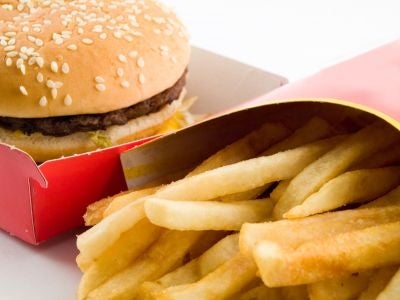Your support helps us to tell the story
From reproductive rights to climate change to Big Tech, The Independent is on the ground when the story is developing. Whether it's investigating the financials of Elon Musk's pro-Trump PAC or producing our latest documentary, 'The A Word', which shines a light on the American women fighting for reproductive rights, we know how important it is to parse out the facts from the messaging.
At such a critical moment in US history, we need reporters on the ground. Your donation allows us to keep sending journalists to speak to both sides of the story.
The Independent is trusted by Americans across the entire political spectrum. And unlike many other quality news outlets, we choose not to lock Americans out of our reporting and analysis with paywalls. We believe quality journalism should be available to everyone, paid for by those who can afford it.
Your support makes all the difference.The high calorie counts of the artery-clogging fast foods were right in front of their eyes, but adults and teens in a recent US study went ahead and ordered burgers anyway.
So said researchers at New York University whose findings were published this week in the International Journal of Obesity, just as a major policy to display calorie counts on menus is taking effect across the United States.
The study examined 427 parents and teenagers in low income areas of New York City and Newark, New Jersey before mandatory menu labeling began in 2008 and after.
Teenagers noticed the labels, but fewer than one in 10 used the information in their purchase choice.
"After labeling began, 57 percent in New York and 18 percent in Newark said they noticed the calorie information. A total of nine percent said that the information influenced their choices," said the study.
Among adults, 28 percent said the information influenced what they ate.
But in the end, the calorie counts show that having the information ahead of time made no difference in the amount that adults and teens gobbled down.
"Teens purchased about 725 calories and parents purchased about 600 calories for their children," it said. Those averages were the same as before calorie labels went on display.
What counted most was taste, followed by price, said people who completed a survey afterward.
"It is important to further examine the influence of labeling, as it rolls out across the country as a result of the new federal law," said Brian Elbel, assistant professor and lead author of the study.
"At the same time, it is important to understand that labeling is not likely to be enough to influence obesity in a large scale way. Other public policy approaches, as well as the efforts of food companies as other actors, will be needed."
ksh/mac

Join our commenting forum
Join thought-provoking conversations, follow other Independent readers and see their replies
Comments